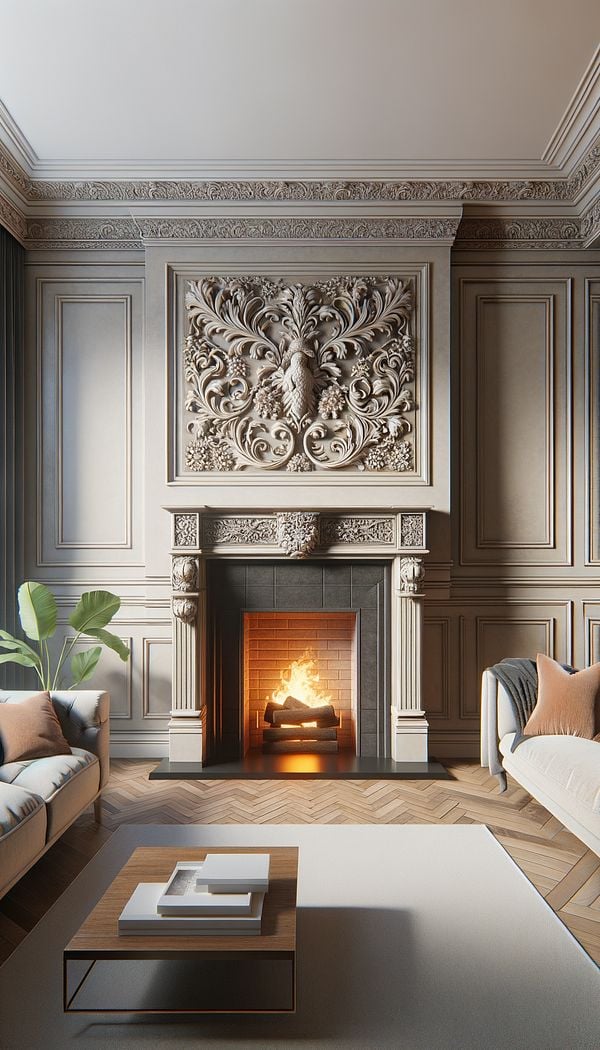What is Friese?
Friese refers to a decorative border or panel
Description
Friese, in the context of interior design, relates specifically to decorative borders or panels that adorn various surfaces, most notably on walls, furniture, and fabric. This term is derived from the architectural frieze, which is a broad horizontal band of sculpted or painted decoration on a wall near the ceiling. In interior design, however, friese can manifest in many forms, ranging from intricate carvings on furniture to embroidered patterns on fabric panels.
The beauty of friese lies in its versatility and the textural contrast it can introduce to a space. Whether it's a geometric pattern that frames a doorway, a floral motif that graces the top edge of a sofa, or an ornate embroidery on curtain panels, friese adds a layer of detail and sophistication to an interior. This element can serve as a focal point or subtly enhance the aesthetic appeal of a room, depending on its design and placement.
As trends in interior design evolve, so too do the materials and styles of friese. From classical motifs inspired by ancient Greece to contemporary digital prints, the possibilities are endless. This allows designers to incorporate friese in a way that complements the overall theme and mood of a space, making it a versatile tool in the interior design repertoire.
Usage
Examples of friese application in real-world interiors include an elaborately carved wooden border on a historic mantelpiece, an embroidered trim running the edge of drapery in a contemporary living room, or a painted friese separating two different color walls in a transitional space.
FAQs
-
How is Friese different from frieze?
Friese refers to a decorative border or panel within the realm of interior design, while frieze is an architectural term specifically denoting a broad horizontal band of sculpted or painted decoration, usually found on the exterior or interior walls of buildings. The term 'friese' can apply to smaller, more versatile decorative elements in interiors.
-
Can Friese be used in modern interiors?
Yes, friese can be seamlessly integrated into modern interiors. Despite its classical origins, it can be adapted in style, material, and design to complement contemporary design themes, adding a tactile or visual accent that elevates the space.
-
Is Friese suitable for all types of rooms?
Absolutely. Friese can be adapted to suit any room, from living rooms and bedrooms to kitchens and bathrooms. The key is selecting a style and material that aligns with the room’s overall aesthetic and functional requirements.
Practical Application
When incorporating friese into your design, consider the scale and detail of the pattern relative to the space and the other design elements present. Opt for simplicity in smaller rooms to avoid overwhelming the space, and choose more intricate designs for larger areas or as statement pieces. Also, think about the material of the friese in relation to its surroundings to ensure harmony and balance in your design scheme.
-
Furniture Types599 articles
-
Decorative Techniques322 articles
-
Decorating Principles & Elements330 articles
-
Textiles & Upholstery252 articles
-
Wall Treatments & Finishes157 articles
-
FF&EFF&E refers to the movable furniture, fixtures, and equipment within a building.
-
Butterfly TableA versatile table featuring hinged leaves that can be folded and stored under its top.
-
SeersuckerSeersucker is a puckered, lightweight fabric commonly used in a variety of interior design applications.
-
Bed CanopyA bed canopy is a decorative covering suspended over a bed.
-
Corner BlockA corner block is a decorative or structural element used at the corner joints of furniture.
